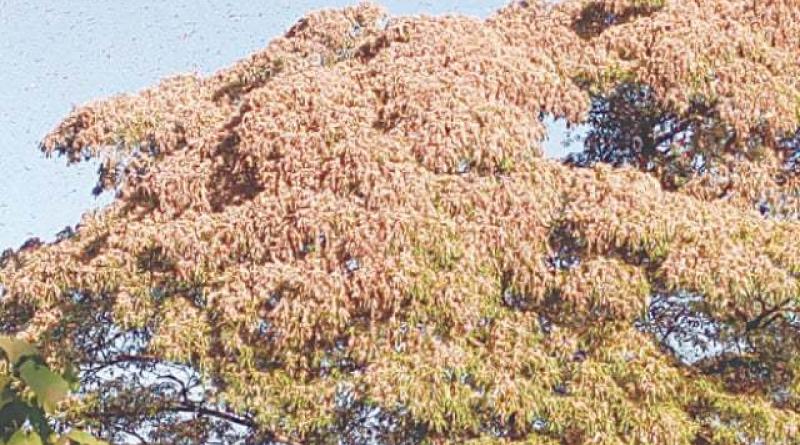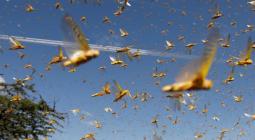Kenya braces for return of devastating locust swarms.

NAIROBI (Reuters) - Swarms of desert locusts have reappeared in East Africa to the dismay of farmers and villagers who witnessed them wreak havoc on their crops and pasture in previous years.
Locust swarms first soared in number in late 2019, as a result of unusual weather patterns amplified by climate change. They dispersed eastwards from Yemen leaving Kenya, Somalia and Ethiopia hardest hit.
“In Kenya, several immature swarms are arriving every day and spreading west throughout northern and central areas,” the U.N. Food and Agriculture Organization (FAO) said in a statement.
“Swarms have now been seen in seven counties ... compared to four last week. A few swarms are starting to mature.”
News of the swarms has left people resorting to any measures they can to get rid of them.
One farmer in Marsabit in northern Kenya tried to chase a swarm of locusts from his land by banging a stick against a jerry can, causing clouds of insects to swarm around him as they briefly flew off from his crops.
“He was trying to chase them... we helped him, but it was too much,” Ilias Iman Abdulkadir, a senior project officer at Catholic Relief Services based in Marsabit, told Reuters.
Abdulkadir said the situation was similar in the rest of Marsabit.
“The first wave just passed around the town, but this one actually came within the town, almost everyone came to see, people were very much scared,” he said.
The swarms are not limited to Kenya. Immature hoppers have also hatched in Ethiopia and Somalia.
“In the Horn of Africa, aerial and ground control operations continue against highly mobile swarms in Ethiopia and Kenya, and hopper bands and mature swarms in northern Somalia,” FAO said.
*watch the video here
19 January 2021
REUTERS





